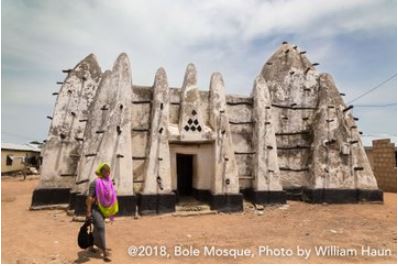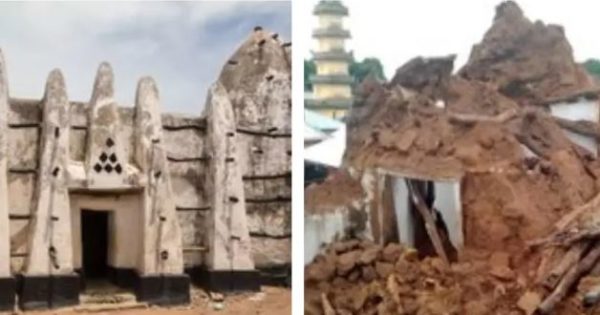Lifestyle
How Ghana’s famous historical site, the Bole Mud Mosque collapsed
The ancient Bole Mud Mosque is one of Ghana’s six mud mosques built in the Sudanese-Sahelian style of architecture.
The history of the Bole Mosque is uncertain. The Bole Mosque is located in the West Gonja District of Ghana and it is believed to have been built in the 17th century.

Oral tradition suggests its origins date back over 200 years and coincide with the arrival of Mande conquerors from Djenne due to the gold trade.
Recent research by Denis Genequand and his team has questioned the claim that it is 200–300 years old. Radiocarbon results from recent research and Samori Touré’s 1896 razing date its construction to the early 20th century.
One of the best features of the structure was its wooden poles found in and between buttresses. The mosque’s wooden poles used for plaster and painting maintenance are not mainly decorative but offer structural support. That is why officials should have been alerted when termites began to eat into it.

Photographer William Haum said that as of 2018, it had shown signs of wear and tear. He wrote, “I was disappointed to see that the local community has put their energy and finances into modern tiles but left other parts of the mosque in disrepair. The support beams in the ceiling were visibly infested with termites. Unless something is done to control the termites, I wouldn’t be surprised if the roof collapses in a year or two.”
As of today, the Mud Mosque is no more. Haum reports that it has crumbled. Harsh weather conditions and torrential rainfall are some of the reasons why the building collapsed, but perhaps it is more than that. Years of neglect of this historical and cultural building probably led to its collapse.







